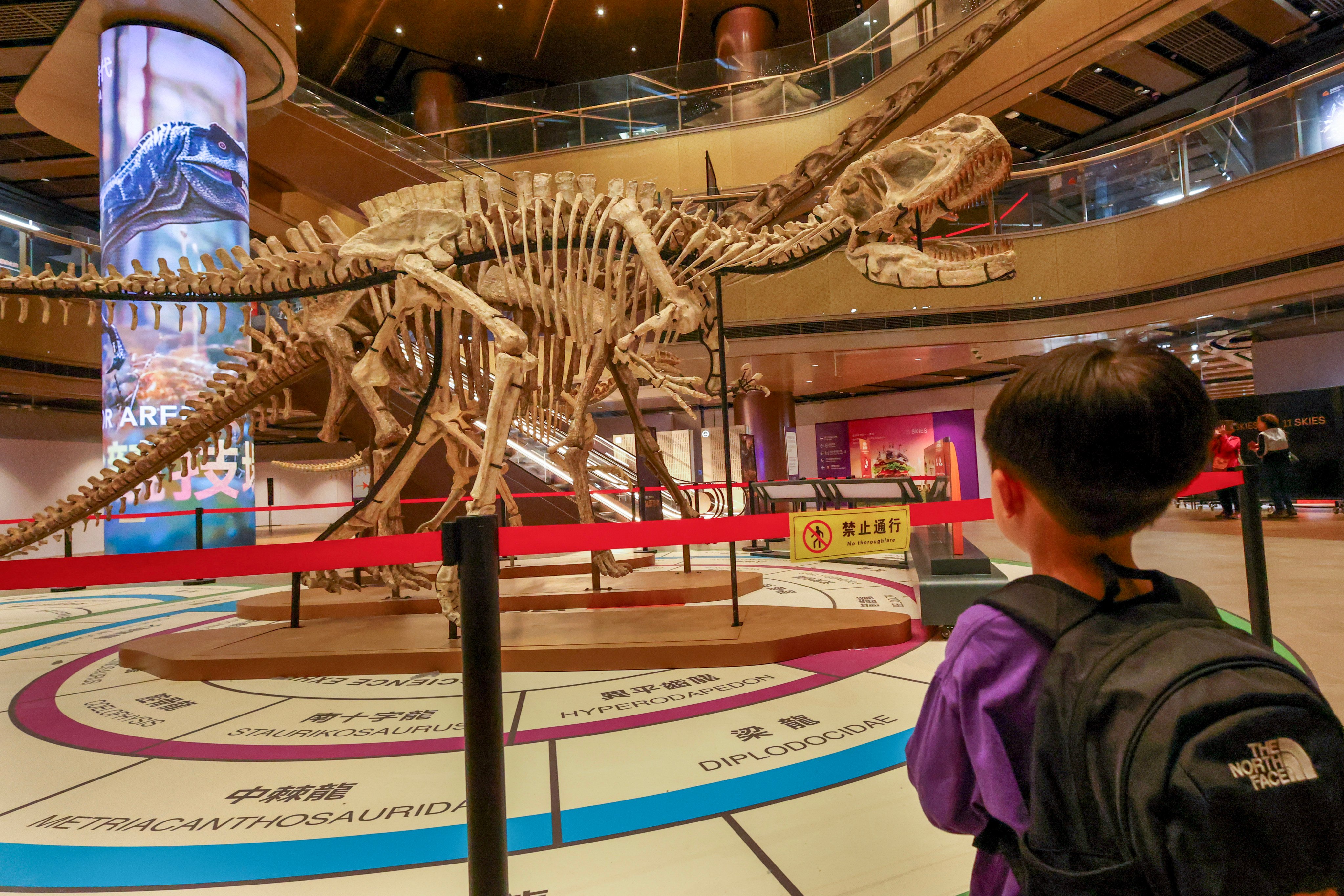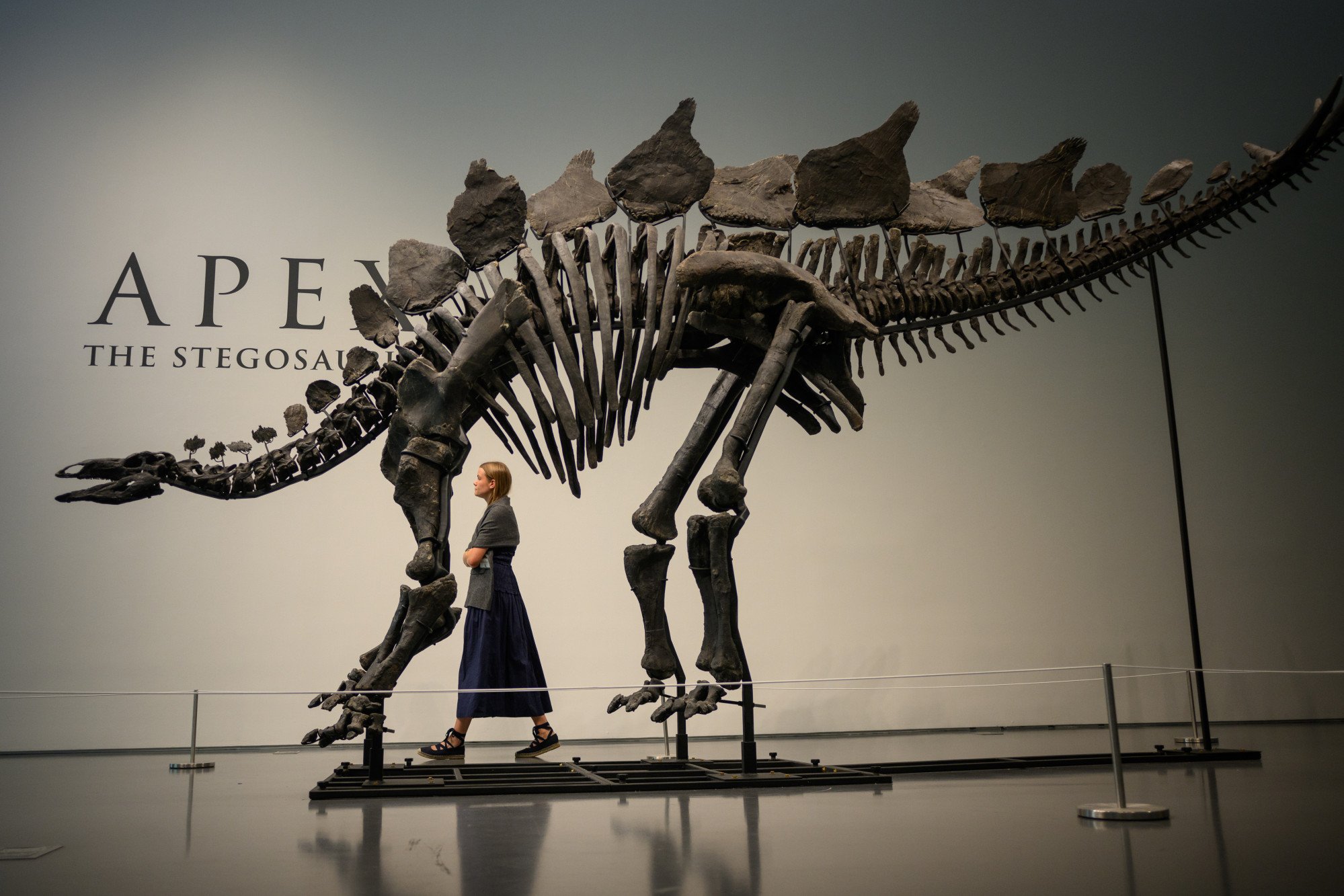Blockbuster auctions of dinosaur skeletons don’t do science any favours
From auction houses to the emergence of online retailers, the fossil trade risks robbing the world of research and educational opportunities

Few people know that the great auction houses of the United States and Europe are not only some of the world’s largest brokers of fine and decorative art, jewellery and collectibles, they are also catering to the booming demand for prehistoric fossils. Auction houses are involved in selling these specimens to rich private collectors.
Last week, a juvenile specimen of Ceratosaurus nasicornis, one of four skeletons of the ancient species known to exist, was auctioned off by Sotheby’s for US$30.5 million.
During many of these sales, it isn’t clear who is purchasing the fossil and where it might eventually end up. Some argue that these kinds of sales increase philanthropy in fields such as palaeontology.
Take Christie’s 2020 sale of “Stan” for example. The nearly complete Tyrannosaurus rex specimen changed hands for a record-breaking US$31.8 million. After the mystery sale, there was much speculation over its fate, and palaeontologists were relieved when Stan found its home at the Natural History Museum Abu Dhabi, expected to be completed this year.
The Stegosaurus skeleton “Apex” was sold at a Sotheby’s auction for a staggering US$44.6 million in July 2024, the most expensive auctioned dinosaur fossil. It was bought by Kenneth Griffin, founder and CEO of the hedge fund Citadel, who in turn loaned it to the American Museum of Natural History in New York for four years.
In addition to T.rex fossils, auction houses have sold skeletons of Triceratops, Diplodocus, Allosaurus, Stegosaurus and the extremely rare and birdlike Deinonychus.

But what happens when dinosaur fossils change hands and are passed down generations in much the same way that wealth is?
Scientists worry that not every private owner would have the generosity to donate their fossils to museums for public access. In recent years, such auctions have shown no sign of slowing down, underlining a growing conflict between the commercial interests involved in fossil sales and the scientific value of preserving them for research and educational purposes.
Prominent academics have been outspoken about the practice. One of the world’s leading T.rex researchers, Thomas Carr, an associate professor of biology at Carthage College and director of the Carthage Institute of Paleontology in the US state of Wisconsin, told the website Live Science that there are now more scientifically valuable T.rex specimens in private or commercial ownership than in public museums and public trusts.
Carr called the situation “dispiriting and exasperating” and noted that the ownership of juvenile and subadult specimens was especially worrisome because it hindered academic research. His study, “Tyrannosaurus rex: An endangered species”, published in April, found that 71 scientifically valuable T.rex specimens are in private hands, outnumbering the 61 held in public trusts.
According to Carr’s study, commercial companies have collected more T.rex specimens in the past 30 years than public trusts have in the past 130. Only 11 per cent of commercially discovered T.rex fossils end up in public institutions.
This is the bigger picture, but there are also concerns on a smaller scale. If you’re an amateur palaeontologist or someone interested in fossils, it’s not hard to build up your own private collection today. Some online retailers specialise in selling authentic fossils at modest rates.
Unhandled type: inline-plus-widget {“type”:”inline-plus-widget”}
FossilEra is one of the largest online retailers. The website says their specimens are sourced from a network of collectors worldwide. In this thriving online ecosystem, plenty of others have emerged, such as Fossil Shack, Stones & Bones, Henskens Fossils and Fossil Age Minerals. While some argue that this drives a public interest in palaeontology, potential pitfalls have been overlooked.
As these private sales grow, and fossils change hands easily, so do the concerns that taking these specimens out of the surroundings in which they were originally found piecemeal can hinder study. Rapid commercialisation is driving the illegal fossil trade and the black market for fossil poaching.
Over the years, countries such as Brazil and Mongolia have been trying to clamp down on this. In 2015, American actor Nicolas Cage agreed to return a rare dinosaur skull that he had bought for US$276,000 from a Beverly Hills gallery to the Mongolian government because it had been stolen.
The fossil trade is also exacerbated by the legacy of colonialism, as Asian countries are already grappling with a void in their own fossil heritage due to these ancient specimens having found their way to the museums in the West. It was once common practice for colonialists to ship groundbreaking finds back to Europe or North America, where they would be studied to benefit Western knowledge production rather than that of the countries in which they were found. A study published in the journal Nature Ecology and Evolution in 2022 found that, over the last 30 years, 97 per cent of fossil finds in one major database were added by researchers based in high- or upper-middle-income countries.
Fossils are our eyewitnesses to ancient history. The growing number in the hands of private collectors are a loss to science as they deprive researchers of critical insight into evolution.
The world needs a more collaborative approach. This would mean more shared access between scientists of different countries and the international distribution of data and knowledge to address historical inequalities. Private sales only hinder such collaborations, preventing us from more deeply understanding our past, bone by bone.